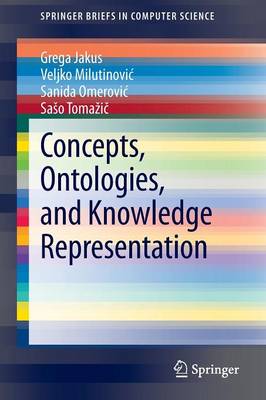SpringerBriefs in Computer Science
2 total works
Concepts, Ontologies, and Knowledge Representation
by Grega Jakus, Veljko Milutinovic, Sanida Omerovic, and Saso Tomazic
Recording knowledge in a common framework that would make it possible to seamlessly share global knowledge remains an important challenge for researchers. This brief examines several ideas about the representation of knowledge addressing this challenge. A widespread general agreement is followed that states uniform knowledge representation should be achievable by using ontologies populated with concepts.
A separate chapter is dedicated to each of the three introduced topics, following a uniform outline: definition, organization, and use. This brief is intended for those who want to get to know the field of knowledge representation quickly, or would like to be up to date with current developments in the field. It is also useful for those dealing with implementation as examples of numerous operational systems are also given.
Spatial Auditory Human-Computer Interfaces
by Jaka Sodnik and Saso Tomazic
This book focuses on a special group of auditory interfaces using spatial sound for the representation of information. The addition of information on the location of a selected sound source or a group of sources shows many advantages over a mere single-channel audio. This survey explains the most important limitations of the human hearing system and the perception of spatial sound. It also includes some technical background and basic processing and programming techniques for the creation and reproduction of spatial sounds with different audio equipment.
Spatial auditory interfaces have evolved significantly in the last couple of years and can be found in a variety of environments where visual communication is obstructed or completely blocked by other activities, such as walking, driving, flying, operating multimodal virtual displays, etc. An entire chapter of this survey is dedicated to the most important areas of spatial auditory displays: mobile devices and computers, virtual environments, aircrafts and vehicles, visually impaired and blind computers users, and brain-computer interfaces.

